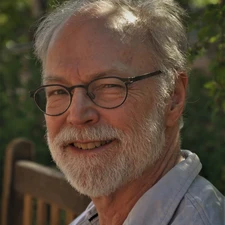Kenneth P. Kodama

The 2021 Petrus Peregrinus Medal is awarded to Kenneth P. Kodama for fundamental contributions quantifying the physical mechanisms that control palaeomagnetic records in sedimentary rocks and for advancing the discipline of rock magnetic cyclostratigraphy.
Kenneth Kodama has devoted much of his career to a rigorous scrutiny of the assumption that a palaeofield-parallel remanence, once locked in, is preserved in sediments and sedimentary rocks. Through theoretical, experimental and observational studies, Kodama has painstakingly investigated and documented the effects of sedimentary compaction and tectonic deformation on magnetic palaeofield records; how these effects depend on the characteristics of both the magnetic minerals and their matrix; and the physical mechanisms that control grain orientations. In light of this new knowledge, Kodama proposed a method to estimate quantitatively the degree of reorientation through anisotropy studies in the laboratory. This extraordinary body of work provides the fundamental underpinning for the continued and advanced use of sedimentary palaeomagnetism to understand the past geodynamo, plate motion, and quantitative rock deformation.
Beyond his breakthrough research on remanence reorientation and especially inclination shallowing, Kodama had advanced the discipline of environmental magnetism, most notably as a leader in cyclostratigraphic investigations utilizing rock magnetism. Variations in magnetic properties of sediments reflect underlying changes in mineral composition, concentration, and grain size, and these in turn may provide evidence of orbitally-driven variations in climate and environment. His comprehensive research has culminated in the publication of two essential books that represent the state of the art in sedimentary magnetic research: “Paleomagnetism of Sedimentary Rocks: Process and Interpretation”, published in 2012, and “Rock Magnetic Cyclostratigraphy” with Linda Hinnov published in 2015.
Kodama’s recent exceptional work has used rock magnetic cyclostratigraphy to obtain the best constraints yet on the duration and global synchroneity of the Ediacaran Shuram carbon isotope excursion, the largest such event in Earth history. This innovative work sets the stage for future uses of sedimentary rock magnetism to provide new insight into Earth processes through linkages with cyclostratigraphy.
